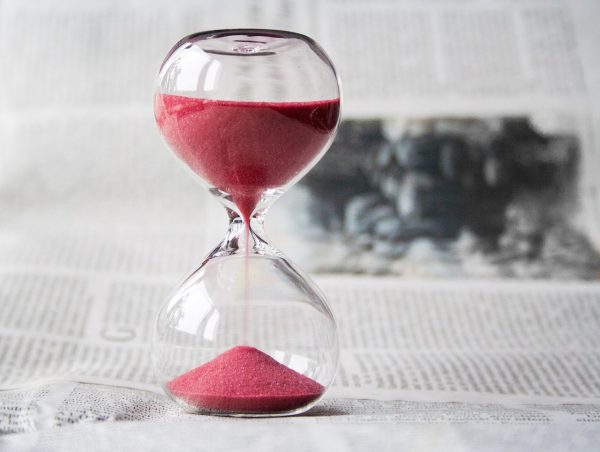Reading is a powerful tool for self-improvement and growth. It enhances knowledge, sharpens your focus, and improves communication skills. Effective readers don’t just skim through words; they have habits that help them absorb, retain, and apply what they learn. Here are the top five effective reading habits. Anyone can adopt these to improve their effective reading skills.
1. Set Clear Reading Goals
Setting clear goals before diving into any reading material is crucial for effective reading. Having a purpose allows you to focus better, absorb relevant information, and stay engaged. Whether it’s reading for knowledge, pleasure, or skill-building. Knowing what you want to achieve makes the process more productive.

How to Set Effective Reading Goals:
- Identify why you are reading the material.
- Break down your reading into manageable chunks, like a chapter or section per day.
- Keep a list of takeaways or key insights from each reading session.
- Regularly review your progress toward your reading objectives.
By setting clear goals, you transform reading from a passive activity into an intentional and rewarding one.
2. Practice Active Reading
Active reading is a crucial habit that distinguishes effective readers from passive ones. When you read actively, you’re engaging with the content on a deeper level. This involves asking questions, highlighting important points, and taking notes as you go along. Active reading sharpens your critical thinking and ensures that the material sticks.
Steps to Practice effective reading strategies :
- Preview the material before starting to get a general sense of the content.
- Take notes on important points, either in the margins or in a notebook.
- Ask questions about the text to engage your mind.
- Reflect on how the material applies to your life or current situation.
- Annotate the text: Underline key points, write comments in the margins, or use symbols to mark important passages. This form of engagement helps reinforce your understanding and makes it easier to review later.
Active reading requires effort, but has high rewards. It helps you retain and apply the information more effectively.
3. Build a Consistent Reading Routine

Like any other skill, reading improves with regular practice. Effective readers understand the importance of consistency. They make reading a part of their daily routine. This habit helps maintain momentum and ensures that reading becomes a long-term commitment rather than a sporadic activity.
Tips for Creating a Reading Routine:
- Set aside a specific time each day dedicated to reading
- Start with short reading sessions, increasing the time
- Create a comfortable and distraction-free reading environment
- Combine reading with other daily activities, like during your commute or before bed
By developing a consistent reading habit, you’ll notice an improvement in your reading speed, comprehension, and overall enjoyment of the activity.
4. Effective Reading Techniques
Effective readers use a variety of techniques to enhance their reading comprehension and retention. These strategies allow readers to approach different types of material with the right mindset and tools. Whether you are reading for pleasure, study, or professional growth. Having an arsenal of effective reading techniques can make all the difference.
Examples of Effective Reading strategies:
- Skimming: Quickly reading through a text to get the main ideas without focusing on details.
- Scanning: Searching for specific information or keywords without reading every word.
- Summarising: After reading, write a brief summary of what you’ve learned to reinforce comprehension and retention.
- SQ3R Method: Survey, Question, Read, Recite, and Review-this strategy breaks reading into stages to boost understanding.
- Recall Reading: After reading a section, look away and try to recall the main points. This technique strengthens memory and helps identify areas that need further review.
Adopting these reading techniques ensures that you’re engaging with the text in the most effective way possible. This will help you grasp and retain important concepts.
5. Know When to Quit
While finishing every book you start might seem admirable, it’s not always the best use of your time. Effective readers understand the value of their time and aren’t afraid to put down a book that isn’t serving their goals or interests.
Why It’s Okay to Quit Uninteresting Books:
- Time is limited: There are countless books available, and life is too short to spend on those that don’t captivate or benefit you.
- Forcing yourself through an unenjoyable book can lead to reading burnout.
- Quitting allows you to move on to books that align better with your interests or goals.
- It helps you refine your taste in literature and become more selective in your reading choices.
How to Decide When to Quit:
- Give the book a fair chance (e.g. read the first 50-100 pages).
- Ask yourself if you’re gaining value from the book or if you’re actually interested in continuing.
- Consider if there are other books you’re more excited about reading.
- Don’t feel guilty about not finishing – view it as making room for better reads.
Remember, the goal of reading is to learn, grow, or enjoy. If a book isn’t fulfilling that purpose, it’s okay to let it go and move on to something more rewarding.
Bringing It All Together
Reading is a gateway to knowledge, personal growth, and self-improvement. By adopting these five effective reading habits – setting clear goals, practicing active reading, building a consistent routine, using effective techniques, and knowing when to quit – you can enhance your effective reading skills and make the most of every book or article you encounter. Remember, becoming an effective reader is a journey, not a destination. Continuously refine your approach and enjoy the process of becoming a more skilled and discerning reader.